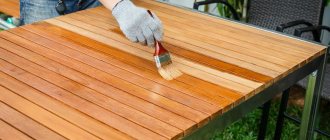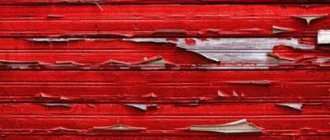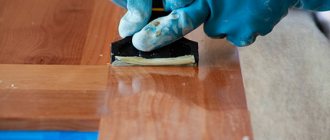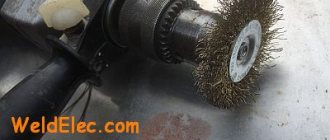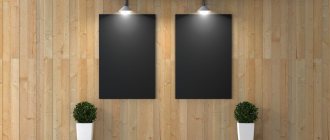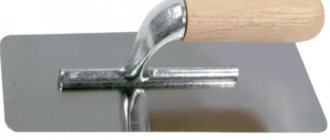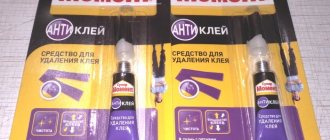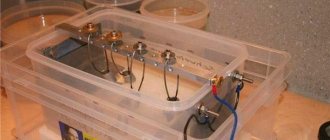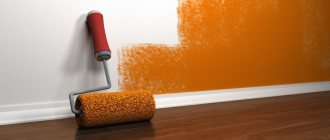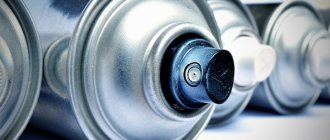Let's apply a special varnish remover to our surface. Wooden surfaces (parquet, furniture, panels, etc.) are often varnished to preserve the natural grain of the wood.
There are different types of varnishes; the appropriate brand is selected for the wood.
Over time, the varnish coating begins to lose its shine, wears off the surface, and cracks.
The question arises: how to remove varnish from a wooden surface in order to prepare the area for a new coating.
Technical features of the event
Almost all types of varnishes form a film. The compositions differ in the principle of action and in the thickness of the coating formed. Therefore, there is no universal way to remove it.
The choice of solution for how to remove varnish from a wooden surface depends on the following criteria:
- density and coating layer;
- chemical composition of the finish;
- the nature of the working foundation.
The last point is especially important. To work with fabrics, glass or parquet, you need to use different techniques. Let's take a closer look at each of them.
What paint should I use on a varnished wooden surface?
Selection of paint and varnish material
- Acrylic paints, polyurethane, perchlorovinyl or oil bases, or opaque enamel.
- Stain, varnish
, oil impregnation. ... - If you want to choose an odorless paint coating for wooden doors, we recommend giving preference to acrylic compositions.
Interesting materials:
How does an aquarium heater work? How does aquastop work on a hose? How does aquastop work in a washing machine? How does Aquastop work? How does the Yandex Zen algorithm work? How does the YouTube algorithm work? How does the YouTube algorithm work? How does Alice Yandex work? How does anaerobic glue work? How does Android TV Box work?
Description of various methods
Removing the varnish coating involves direct action on the film. This may be mechanical force, the use of chemically active compounds or thermal pressure. Each option has its own characteristics.
Mechanical impact
The easiest way to remove varnish from wood or other surfaces is to peel off the film by physical force. To do this, use a tool with stiff bristles or a metal blade.
Manual scraper for mechanical removal of paintwork materials Source vseinstrumenti.ru
Thin-layer coatings can also be abraded with varying degrees of grit abrasive. As an alternative to ready-made devices, blades, knives, and glass can be used. The latter, however, wears off very quickly. In any case, you need to protect your hands from cuts.
In addition to hand tools, there are analogs for use with electrical equipment. Thus, an analogue of a cord brush are attachments with metal bristles, which can be installed in a chuck for a drill and screwdriver. With an angle grinder, flap discs with bristles along the edge and emery or grinding wheels are used. The latter are fixed on a special platform called a plate.
Another solution to removing varnish from a wooden surface is a specialized tool. This is a sanding machine. There are three types:
- vibration - a rectangular platform with a small amplitude makes reciprocating movements in the longitudinal direction;
Vibrating grinder Source gidpokraske.ru
- tape - here the sandpaper is represented by a closed narrow strip, which the mechanism rotates in one direction in a straight line relative to the tool;
- eccentric - the mechanism transmits translational and reciprocating circular movements to the platform.
The high efficiency of each of the tools is the main advantage. But during the grinding and polishing process, a large amount of dust is generated. This problem can only be solved with models that can function in conjunction with a vacuum cleaner. Practice shows that a simple dust collector slightly improves the situation.
The listed solutions have both advantages and disadvantages. On the one hand, there is no need to breathe toxic substances, there is no risk of changing the color of the working base, and you can control the entire process. But on the other hand, in addition to the dust generated, there is a risk of mechanical damage to the wood structure, fabric fibers and scratches on a smooth surface.
See also: Catalog of companies that specialize in finishing materials and related work
Chemical removal
A wide range of products are available on the construction market for removing varnish from wooden surfaces.
Special remover for old paint and varnish Source voil.ru
These can be liquid removers, gel-like compositions, solvents and powders. Let's look at the features of each of them:
- Liquid . The product is used provided that the coating consists of a maximum of three layers. This is justified by the fact that such varnish remover contains solvents that evaporate quickly. That is, chemical reagents can affect the coating for an extremely short period of time. Also, due to the consistency, there is a limitation in the form of vertical bases. Here the wash just runs off.
- Gel and paste . Such compositions can have a chemical effect on the base for a long time. Therefore, they are relevant for removing multi-layer coatings, including vertical ones.
- Powder . This option is more often used in the case of large-scale work, which is justified by convenience and long shelf life. Before use, the material must be dissolved in water to obtain a thick paste-like mass.
Removing coating after chemical exposure Source sdelai-lestnicu.ru
Solvent can also be considered one of the means for removing varnish from wooden surfaces. But here it is important to take into account the fact that the composition is capable of chemically acting on the coating only until it has dried. A spray works a little better, which turns into foam at the exit. This mass is not as fluid as liquids. But the action time is inferior to gels and pastes.
Thermal impact
A relatively universal solution for how to clean varnish from a wooden surface can be considered thermal action. By heating the base, the bond between it and the coating weakens. The film first cracks, then softens. Therefore, it can be easily removed with a regular spatula.
How to remove yellowness from lining. How to update darkened lining without much effort?
It often happens that over time the lining darkens. This may also be due to poor-quality wood processing or failure to comply with proper operating conditions.
But don’t despair, you can carry out repairs and bring the finishing material back to its original form.
There are several ways to lighten darkened lining yourself and make it look like new.
Causes of darkening:
- High humidity.
- Sudden temperature change.
- Improper use of the material.
- Poor care of the material.
- The lining served for more than 12 years.
Required materials and tools
In order to put the finishing in order, you will need the following available tools:
- bleaching composition for wood;
- brush;
- sponge;
- wide brush;
- roller;
- spray.
Darkened areas of the material that are caused by external climatic factors can be lightened using a bleaching solution.
In addition to traditional methods in the form of bleach, hydrogen peroxide or oxalic acid, special compounds are often used that protect the natural structure and do not clog the pores of wood.
These mixtures are non-toxic and fire-resistant; they do not destroy the texture of the material, but increase its level of wear resistance.
Lighting instructions
Important! The brightening solution can be used for interior and exterior work only at temperatures of 10 degrees and above.
- First, you should wipe the lining with a damp cloth to remove small debris and dust.
- Then you need to wait until the wood dries or dry it with a hair dryer at low temperature.
- The brightening mixture can be purchased at a hardware store; it needs to be diluted with a small amount of water (1:1 ratio), so that the solution is not very thick.
- You should test the mixture on an inconspicuous area, if everything is good, then you can start working.
- Next, you need to apply the product to the darkened parts of the lining using a roller; in hard-to-reach places you can use a brush, for example in corners. This brightening solution can also be applied using a spray bottle.
- After the material has dried, it needs to be opened with varnish.
Second lightening method
There is also another way to tidy up the lining and improve its darkened structure.
To do this, the darkened wood should be cleaned of the old coating and the surface should be thoroughly washed with Techopesu detergent. This unique composition has a bleaching effect and instantly brightens damaged material.
Important! To remove mold and blue stains on the lining, you need to use a detergent called Homeenpoisto.
After processing the lining, it is necessary to cover it with paint and varnish material, paint or a glazing antiseptic. These methods will help the material not to lose its original appearance and not fade in the sun.
Now you know how to update darkened lining without much effort. We wish you a pleasant renovation!
Operating Instructions
When choosing what and how to remove varnish from wood, you need to familiarize yourself with the rules of the event in advance. This way the process will be completed with the highest quality possible and without harm to human health. Let's consider the instructions and recommendations of specialists regarding each of the techniques.
Cord brush attachment for a screwdriver Source onlinetrade.ru
Mechanical removal technology
The first thing to do is determine the thickness of the coating layer to be removed. This can be all of the varnish or just part of it. The second option is provided by the base preparation technology if subsequent varnishing with a material similar in characteristics is planned.
Next, select a tool. It is easier to remove the top layers with coarse cord brushes and coarse-grain abrasives. To prevent damage to the base, you need to gradually reduce the degree of aggressiveness of the physical impact. The process is completed by sanding the working area with fine-grained sandpaper. After removing dust and dirt, you can begin further finishing work.
Chemical Removal Technology
The process of removing varnish from wood consists of several stages. But before this, it is important to protect surrounding objects, hands, respiratory organs and eyes from chemical exposure.
Working with chemical compounds in rubber gloves Source berkem.ru
How to cover the lining at the dacha. How to choose a color?
It is very important to choose the right color that will prevail indoors.
This also applies to the color of the future lining. The main thing is to remember that there should not be strong contrasts indoors. If clapboard panels are made inside the house, then the walls, floor and ceiling should differ in color or shade. If the walls are painted the same color and shade as the lining, then all the beauty of the wood will merge with the walls, and you may simply not notice it.
If in a country house the walls of the kitchen or living room are covered with clapboard, then the ideal covering for such walls would be a range of warm shades. Experts recommend paying attention to peach, pistachio, brown or beige colors.
To paint the lining in the bedroom, shades of pink, honey or the color of baked milk are recommended. In a children's room, the colors should be bright and saturated, but scarlet, black, rich blue and purple should be taken very seriously and not overload the space of the room with them, since they are irritating to the eyes.
If there is a study in the house, then gray, green or blue colors are suitable for wall decoration. Be sure to have light-colored pieces of furniture or decor in the room, which can be used to dilute the strict color.
If your country house is very small in size, then you can visually enlarge it inside by covering the paneling with white. The room becomes not only larger, but also brighter, cleaner and more comfortable. Typically, white color is used only for ceilings, on which, if there are any defects, they are almost invisible.
Briefly about the main thing
There are three ways to remove nail polish.
The mechanical option involves the use of brushes, scrapers, abrasives and similar replacement equipment for power tools.
The chemical method involves the use of liquids, gels, pastes and powders to prepare a working mass that softens the varnish coating.
Thermal option - exposure to the surface using a hair dryer and subsequent removal of the coating with a metal spatula.
Each of the methods is accompanied by the formation of dust or the release of toxic substances, so you need to work using protective gloves, goggles and a respirator.
The choice of method is determined by the thickness of the old coating, the nature of the varnish and working base, and the purpose of the event.
Ratings 0
Selecting Tools
To remove nail polish you need the following tools:
- polyethylene film;
- hair dryer, which is used specifically in the construction industry;
- blowtorch;
- hard metal brush;
- soft sponge;
- brush;
- respirator along with a mask for protection;
- a special chemical composition that washes away everything;
- glasses;
- rubber gloves;
- sandpaper;
- sanding paper.
Heat treatment
Heat treatment - heating the surface, under the influence of which the varnish begins to peel off and is easier to remove mechanically or chemically.
When heated, the varnish releases toxic substances, so it works in a well-ventilated area (naturally and artificially) and in protective equipment. To prevent fragments of the coating from getting into your eyes when separated from the base, wear a protective mask or goggles.
When the varnish warms up enough, you need to switch to chemical cleaning. If heated for too long, the coating begins to char. The following tools are used for heating.
Thermal is the fastest method, but there is a possibility of overheating and fire of the wood. During work, both hands are used: one holds a hairdryer or burner, the other quickly removes the varnish with a spatula.
Why is it necessary to get rid of old coating?
The process of restoration of wooden objects consists of three equivalent stages:
- Preparatory, the purpose of which is to remove the old varnish coating until the wooden surface is completely exposed.
- Restorative, during which the texture of the wood is updated using special means.
- The final stage, which consists of applying the final coating to the product, according to the restoration project.
Attention! When starting to renew a wooden product, you should remember the main rule - you need to work carefully, without haste, so as not to damage the wood. It is better to perform cleaning in several passes.


